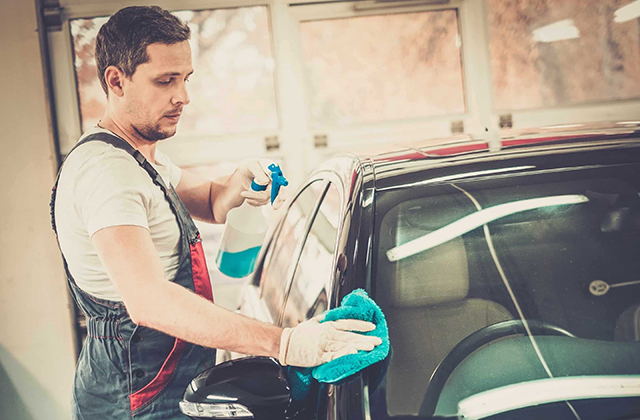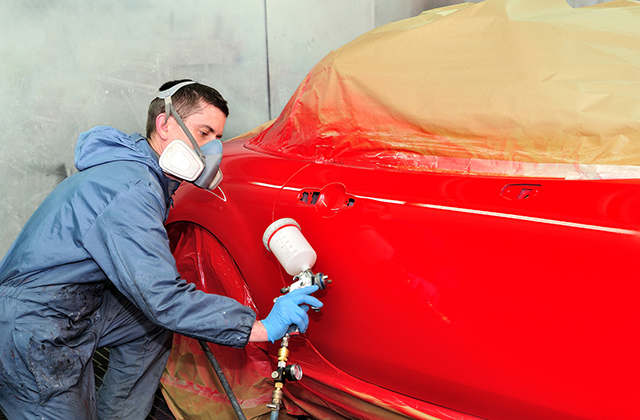Car paint protection can come over as one of the most controversial upselling products around. In spite of Audi’s near impeccable track record of technology and design excellence, used auto sales, in general, can be fraught with trouble right from the start. You’ll want to be certain that someone else’s headache doesn’t become yours.
Whether your buying a secondhand Audi through private car sales, used car websites, seized property auctions, a used auto dealer or purchasing a repo car, be sure to make the kind of used car valuation that will avoid a used auto sale that results in the financial pitfalls and heartaches of bringing home a used car lemon.
First of all, a good start to a used car valuation will necessitate having access to a Kelley Blue Book and NADA used car guide. They are excellent car price guides for accurately measuring market value and Audi prices. Of course, you’ll want to verify VIN’s from the very start, as well as, carefully inspect for any signs that would implicate a history of damage with the vehicle. More specifics on that later.
Surprisingly, a good number of those in search of reliable used cars somehow seem to miss the most basic elements of determining the value of a used auto sale and wind up scratching their heads later when faced with the facts afterwards. Having a reasonably detailed secondhand Audi used car checklist in your possession, and using it, will help to avoid this.
Once you become serious enough about the vehicle you’re considering, purchasing a Carfax report is worth serious consideration. The approximate $30 investment is worth your piece of mind. It is extremely important to make sure you have access to a valid clear title. No in transit, to be issued at a later date, title shenanigans will do, no matter how attractive an Audi used car appears to you. Sometimes an owner, either unintentionally or intentionally, can have title issues that are very difficult to resolve. So, don’t hand over any cash until you’ve inspected the title for any signs of tampering or invalidation.
Having a reasonably qualified person look over the secondhand Audi you’re interested in can save you a considerable amount of future headache. Paying a professional for a small fee to accompany you is even better. More than likely, you can a professional to do this for you for $100 or less. No matter how “good with cars” you might think you are, those who earn their living in the profession can recognize otherwise undetectable signs of damage, abnormal wear or disrepair that you would easily miss.
To go along with the above, here are an additional 20 checkpoints that will get you started on successfully executing a used car valuation of the secondhand Audi you might be considering:
- If all VIN stickers from the doors, hood, trunk, dashboard do not match then the vehicle could have been wrecked or stolen
- New carpeting for no apparent reason could indicate the vehicle has been flooded or not well looked after
- Check for excessive exhaust coming out of the muffler system.
- Evidence of leaks or hand applied seal material to plug up window leaks.
- Auto transmission fluid should be pinkish or a very light reddish color. If dark red or a brownish or smells burnt this could indicate that the transmission might be worn or even damaged.
- Engine oil should be a smooth brown color. If it is in any way a milky looking brown, that would indicate that the oil is mixed with engine coolant. Big problem.
- Check for loose or crooked windows, or power windows that aren’t working. Motors are very expensive to replace.
- Check the pedals to determine if they’ve been replaced from wear or damage. Not a good sign as to the wear and tear of the vehicle.
- Check full functioning air conditioning. Let it run.
- Rusty disk brakes and drums would Indicate that the car has sat abandoned for some time or may have been flooded.
- When you move or jiggle the steering wheel back and forth there should not be any play or odd noises of any kind.
- Bald or uneven tire wear would be an indication of a bad alignment, possibly resulting from a wreck.
- Look for excessive dimples, dings, dents, scratches or paint chips. Give the bumpers good looking over. Do your inspection during daylight hours.
- Variations in paint thickness. This would require a digital thickness gauge.
- Look for fake airbag covers. Vehicle history will tip you as to what to look for.
- Be on the lookout for for any paint over-spray along windshield, engine compartment, traces inside door edges and along door seams.
- Feel around door edges for evidence of leftover masking tape from body work or doors that don’t line up properly.
- Determine if there is excessive mileage for the car’s age. You can deduct $.10 to $.15 per extra mile from the price of the vehicle.
- A rebuilt title lowers the value of the car by 30%. The vehicle report should indicate if it is the case
- Look for any frame irregularity which would indicate involvement in a major accident Give a good look along the vehicle for straightness.
If your vehicle interest involves private car sales, or any type of interaction that deals with a used car owner directly, don’t be intimidated or respond defensively if they appear slightly put off by your intention to execute a highly detailed vehicle inspection.
It’s good policy to inform the owner beforehand of your inspection agenda. Question them directly up front to see whether or not they have any problem with it. If they display any sign of reluctance or hostility toward the idea, this could be a sign of a shifty deal in the making and it might very well be a good time to sound retreat and live to fight another day.
Paqualina Trentino is Senior Media Manager for Secondhand Audi. Significantly noted for its Premium Price Workaround formula for leveraging cheap Audi deals to a nationwide consumer audience, Secondhand Audi also provides car loan, car loan refinancing and auto insurance resources, as well. Find out more about leveraging Premium Price Workarounds for cheap Audi deals by visiting Secondhand Audi.
Article Source: https://EzineArticles.com/expert/Paqualina_Trentino/724458
Article Source: http://EzineArticles.com/4792828



